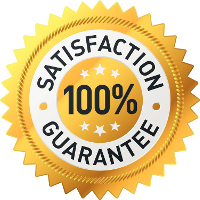a business plan for a bar based in London
where the rent is between 2-3 thousands pounds a month. that can possible in future be a chain
BUSINESS PLAN STRUCTURE
Business Name and Address:
____________________________________________________________
____________________________________________________________
____________________________________________________________
____________________________________________________________
Proprietor’s Name and Address:
____________________________________________________________
____________________________________________________________
____________________________________________________________
____________________________________________________________
Business Form:
___________________________________________________________
Business Activity:
____________________________________________________________
____________________________________________________________
____________________________________________________________
____________________________________________________________
Vision and Mission statement:
____________________________________________________________
____________________________________________________________
____________________________________________________________
____________________________________________________________
____________________________________________________________
PEST analysis:
Government support and rules and regulations:
Rationale for launching the business:
____________________________________________________________
____________________________________________________________
____________________________________________________________
____________________________________________________________
____________________________________________________________
Market Size and Growth:
____________________________________________________________
____________________________________________________________
____________________________________________________________
____________________________________________________________
____________________________________________________________
Selection of Location with reasons thereof:
____________________________________________________________
____________________________________________________________
____________________________________________________________
____________________________________________________________
____________________________________________________________
Proposed Customers:
Competitor Analysis:
Name Strengths Weaknesses
Self Analysis:
Strengths Weaknesses
Competitive Advantages:
____________________________________________________________
____________________________________________________________
____________________________________________________________
____________________________________________________________
____________________________________________________________
____________________________________________________________
____________________________________________________________
Advertising and Promotion Strategy:
____________________________________________________________
____________________________________________________________
____________________________________________________________
____________________________________________________________
____________________________________________________________
____________________________________________________________
Pricing Strategy:
____________________________________________________________
____________________________________________________________
____________________________________________________________
____________________________________________________________
____________________________________________________________
____________________________________________________________
Various sources of finance available and the source selected by you with rationale.
____________________________________________________________
____________________________________________________________
____________________________________________________________
____________________________________________________________
____________________________________________________________
____________________________________________________________
____________________________________________________________
Key People and Job Functions:
____________________________________________________________
____________________________________________________________
____________________________________________________________
____________________________________________________________
____________________________________________________________
FINANCIAL PLAN
I. Sources of funds:
Loan –
Self – Cash
Self – Assets
II. Funding requirement/Applications:
Fixed Assets:
Formation expenses:
Working capital:
Stock:
III. Fixed Assets:
a. Machinery and Equipment:
No. Machinery/Equipment Price + Taxes Qty. Total Value
Required
b. Premises:
____________________________________________________________
____________________________________________________________
____________________________________________________________
____________________________________________________________
____________________________________________________________
c. Raw Material (Stock)
No. Item-Type Qty. Total Value
(Monthly/Annual) (Monthly/Annual)
d. Formation Expenses:
e. Working Capital for Expenses (and the period for):
IV. Product/Service Information (Sales forecast):
No. Item Quantity Projected sale
produced/Month /Month in value
V. Key People and Job Functions and Salary:
____________________________________________________________
____________________________________________________________
____________________________________________________________
____________________________________________________________
VI. Key financial assumptions:
____________________________________________________________
____________________________________________________________
____________________________________________________________
____________________________________________________________
Financial Highlights
(for the first 12 months)
Year 1 Year 2 Year 3 Year 4 Year 5
Turnover:
Profit:
Break even:
GP %
NP%
ROE%
ROCE%
Projected growth of turnover
Projected growth of NP
Gearing
Interest coverage
Forecast Income Statement
Business ____________________________________ Period : Five
years
Year 1Year 2 Year 3 Year 4 Year
5
Sales:
Less direct (variable) costs
Materials
Direct wages
Other
Total direct costs
Operating profit
Fixed costs (overheads):
Profoit before interest and tax
Interest
Profit before tax
Taxation
Profit after tax
Forecast Cash flow Statement
Business ____________________________________ Period : Five
years
Pre- Year 1 Year Year Year Year
operating 2 3 4 5
period
Cash Receipts
Cash Sales
Collection form debtors
Capital
Loan
Others
Cash Payments
Cash Purchases
Payment to creditors
Capital expenses:
Revenue expenses:
Net cash flow
Opening cash
Overdraft or short term
borrowings
Closing cash
Monthly Cash Flow Forecast
Month 1 2 3 4 5 6 7 8 9 10 11 12
Sales
Volume
Value
Receipts
Sales-cash
Sales-debtors
Capital introduced
Grants, loans etc
Total (X)
Payments
Materials
Wages/salaries
Electricity
Telephone
Advertising
Insurance
Transport/travel
Stationery/postage
Repairs/renewals
Local taxes
Professional fee
Other __________
Capital purchases
Loan repayments
Drawings/dividends
Total (Y)
Cash Balances
Cash Flow (X) –
(Y)
Opening Balance
Closing Balance
Forecast Balance sheet
Business ____________________________________ Period : Five years
Year 1 Year 2 Year 3 Year 4 Year
5
Non Current Assets
Current Assets
Total Assets
Capital:
Non Current Liabilities:
Current Liabilities:
Total: Capital + Liabilities:
Sensitivity Analysis: (both positive and negative with detailed explanations like how will you over come negative factors):
1. Based on Sales:
2. Based on Direct cost:
3. Based on Indirect/fixed cost
4. Based on all the above factors:
Long term Strategy:
Use the order calculator below and get started! Contact our live support team for any assistance or inquiry.
[order_calculator]
